What are stars made of? 100 year anniversary!
In May 1925, a young woman published a paper that completely changed our view of the universe. In this article, astronomer Rosie dives into how the composition of stars was discovered!
Introduction
This month marks 100 years since we discovered what stars are made of.
If you’ve ever attended one of our events, you’ll probably know that stars are mostly made of hydrogen gas. But before 100 years ago, scientists believed stars were made of rock and metal, similar to the elements found on Earth. So, this revelation was groundbreaking at the time.
Even more remarkable is that it was made by a young woman who was only 25 years old and still a PhD student. Her name was Cecilia Payne, and she was a fantastic scientist!
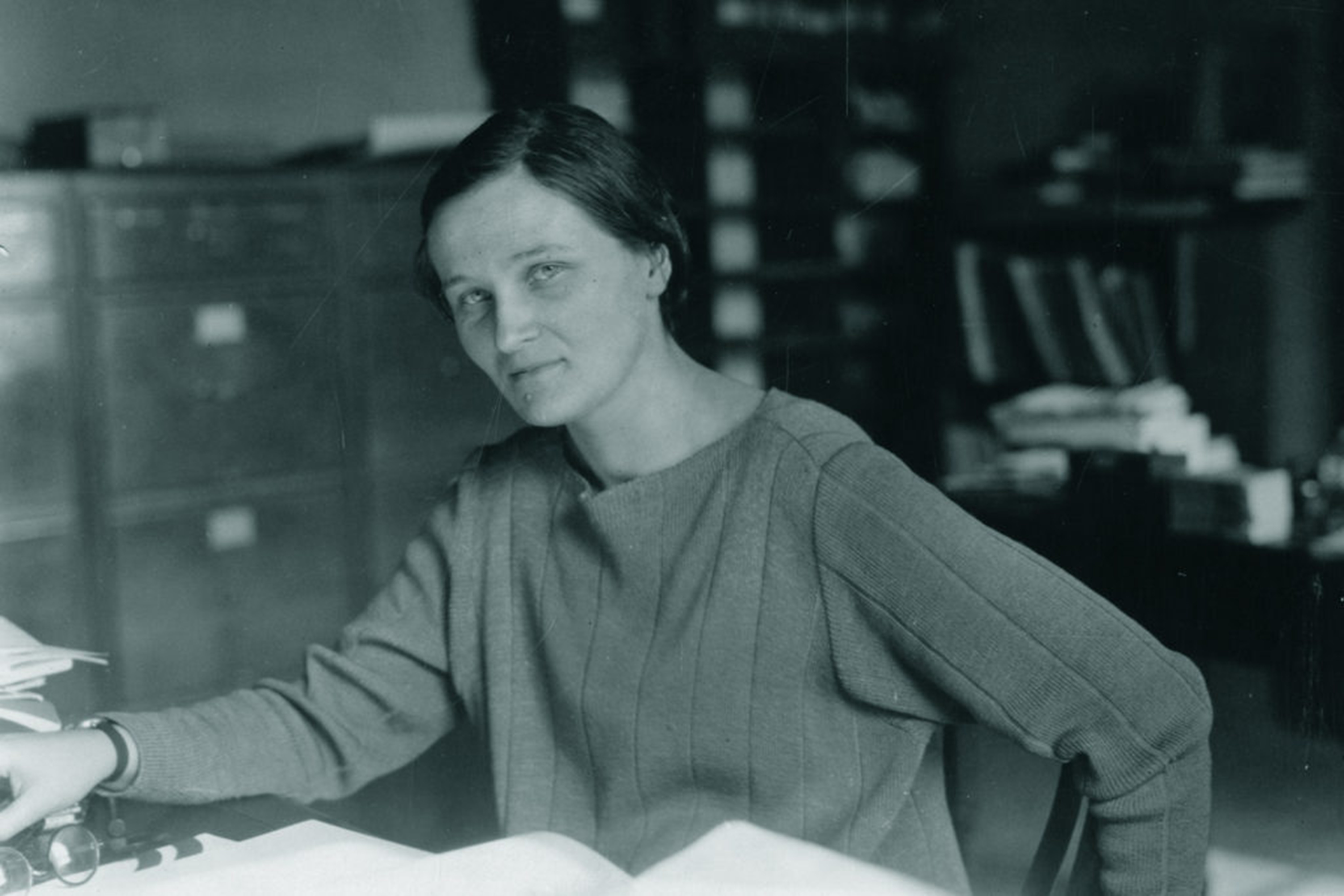
Cecilia Payne at Harvard College Observatory
Who Was Cecilia Payne?
Cecilia Payne was born in England in the year 1900. Even as a young girl, she showed incredible intelligence and a strong interest in science. She worked very hard in school and earned a scholarship to Cambridge in 1919.
Although Cambridge didn’t offer degrees to women at the time, she was still able to study three subjects: botany, physics, and chemistry. During her first year, she attended a lecture by Arthur Eddington, who had just returned from an expedition to observe a total solar eclipse. During that expedition, he was able to prove Einstein’s theory of relativity.
This lecture deeply inspired Cecilia. From that moment, she promised herself she would go on to study physics and astronomy.
However, there weren’t many opportunities for women in the UK who wanted to pursue astronomy and physics. Fortunately, she met Harlow Shapley, who was the director of Harvard Observatory, who mentioned that a graduate program would be opening soon. With a glowing reference letter from Arthur Eddington, Cecilia applied and was accepted. In 1923, she sailed to America to begin her studies under Shapley’s guidance.
To understand how she made this discovery, we need to look at her PhD thesis in more detail. It’s split up into 3 parts
1. The Physical Groundwork – An overview of the science at the time.
2. Her Theory of Thermal Ionization – Where she applied her background in quantum physics.
3. Additional Deductions – The section she’s most famous for- stars are made of Hydrogen!
Part 1: The Groundwork
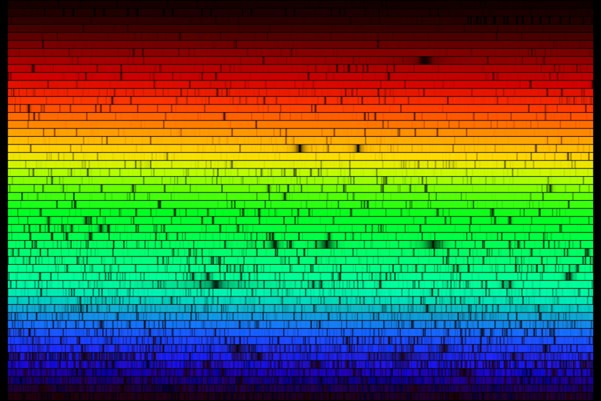
Spectrum from the Sun. N.A.Sharp, NOAO/NSO/Kitt Peak FTS/AURA/NSF
By this point in time, scientists already knew quite a lot about light we get from stars. When you split up the light from a star with a prism, you get a rainbow - red all the way to violet. We call this the visible spectrum of light.
When you look at this spectrum more closely, you start to see dark lines. These dark bands appear where elements in the outer layers of the star absorb some of the light coming from its centre. This phenomenon had been known since the 1800s, when scientists discovered that each element has its own unique set of spectral lines—its own fingerprint.
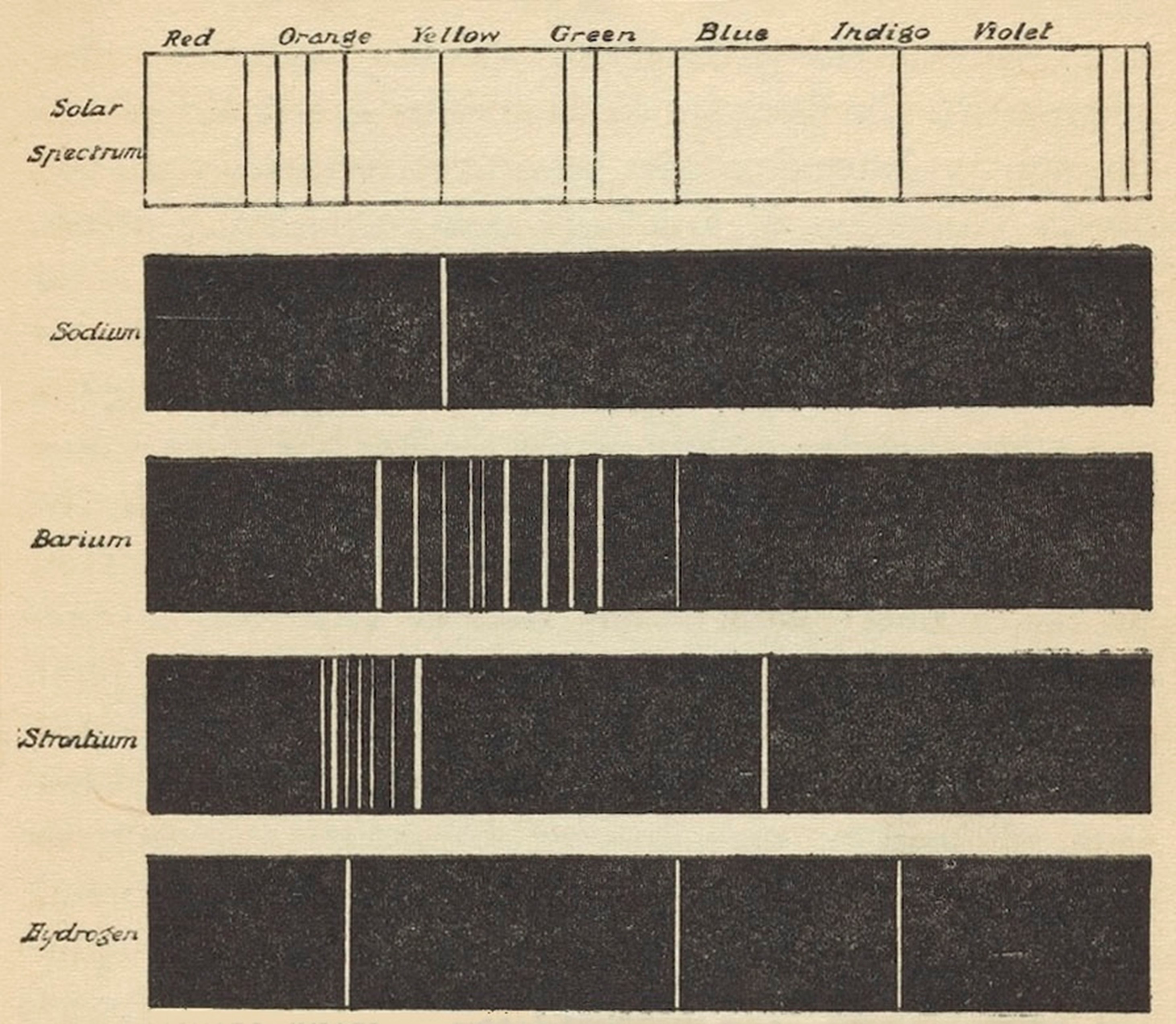
The spectra of different elements. The Romance of Modern Chemistry, 1909. Science History Institute
By observing these lines in starlight, scientists could determine which elements were present in stars. And it turned out that stars contained the same elements found on Earth. However, scientists didn’t yet know the ratios of those elements. They assumed stars had a similar composition to Earth: mostly heavy elements like rock and metal, with just a sprinkling of lighter elements like oxygen and hydrogen.
When Cecilia Payne arrived at Harvard in 1923, she was assigned to analyse stellar spectra. She wasn’t the first woman to do this kind of work—Harvard had a long history of women contributing to astronomical research. These women were known as the Harvard Computers, and they analysed the vast amounts of data coming from the observatory.
Women were often preferred for this work because it was believed they were more patient, more attentive to detail—and, unfortunately, because they could be paid less.
One of the most famous Harvard Computers was Annie Jump Cannon, who is best known for organizing stars into groups based on their spectral lines. Not all stars had the same spectra—there were subtle differences in the lines. Annie Jump Cannon categorized stars into types like O-type and G-type, a system still used today.
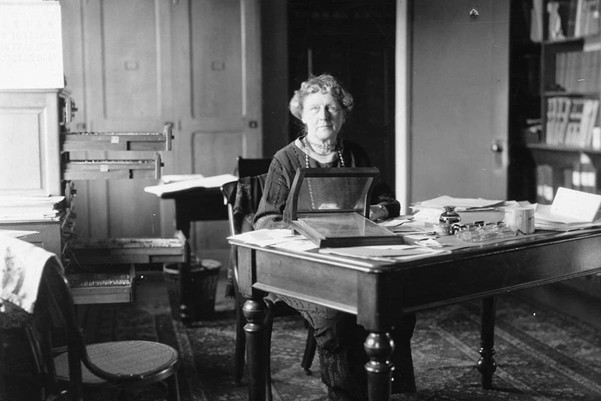
Annie Jump-Cannon at Harvard Observatory, Smithsonian Institution Archives
However, Cannon didn’t investigate the physical reasons behind these spectral differences. Astronomers assumed it had something to do with the stars’ temperatures, but no one had proven it—until Cecilia Payne.
Part 2: Stellar Classes
Payne had an edge over other Harvard Computers: she was familiar with the emerging field of quantum mechanics. These lines we see on the spectrum arise from the behaviour of electrons inside atoms.
Atoms consist of a positive nucleus and negative electrons orbiting in specific energy levels. When an atom absorbs energy—say, from red light—an electron jumps to a higher level. This removes that wavelength from the spectrum, creating a dark line.
Payne’s key insight was that temperature determines which spectral lines appear.
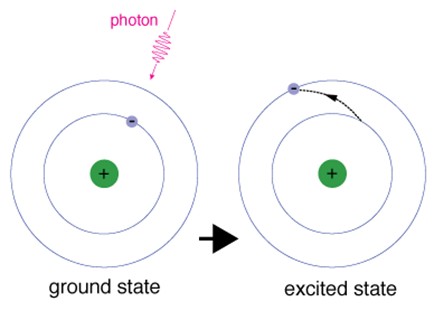
An atom absorbing light. NASA
An atom absorbing light. NASA In hotter environments, electrons are already excited, so it takes more energetic light—like blue—to push them further. In extremely hot stars, electrons can gain enough energy to escape the atom entirely, ionizing it. Ionized atoms can’t absorb light in the same way, so no spectral lines appear.
Payne used an equation from Indian phycisist Meghnad Saha which allowed her to calculate the percentage of atoms ionized at a given temperature. She applied this to the spectra of many stars, combining Saha’s theory with Annie Jump Cannon’s stellar classification system. Two years later, she completed her groundbreaking PhD thesis.
Before Payne, stars were classified by the strength of their spectral lines, without understanding why they varied. Her work showed that temperature was the key factor, linking it directly to spectral class.
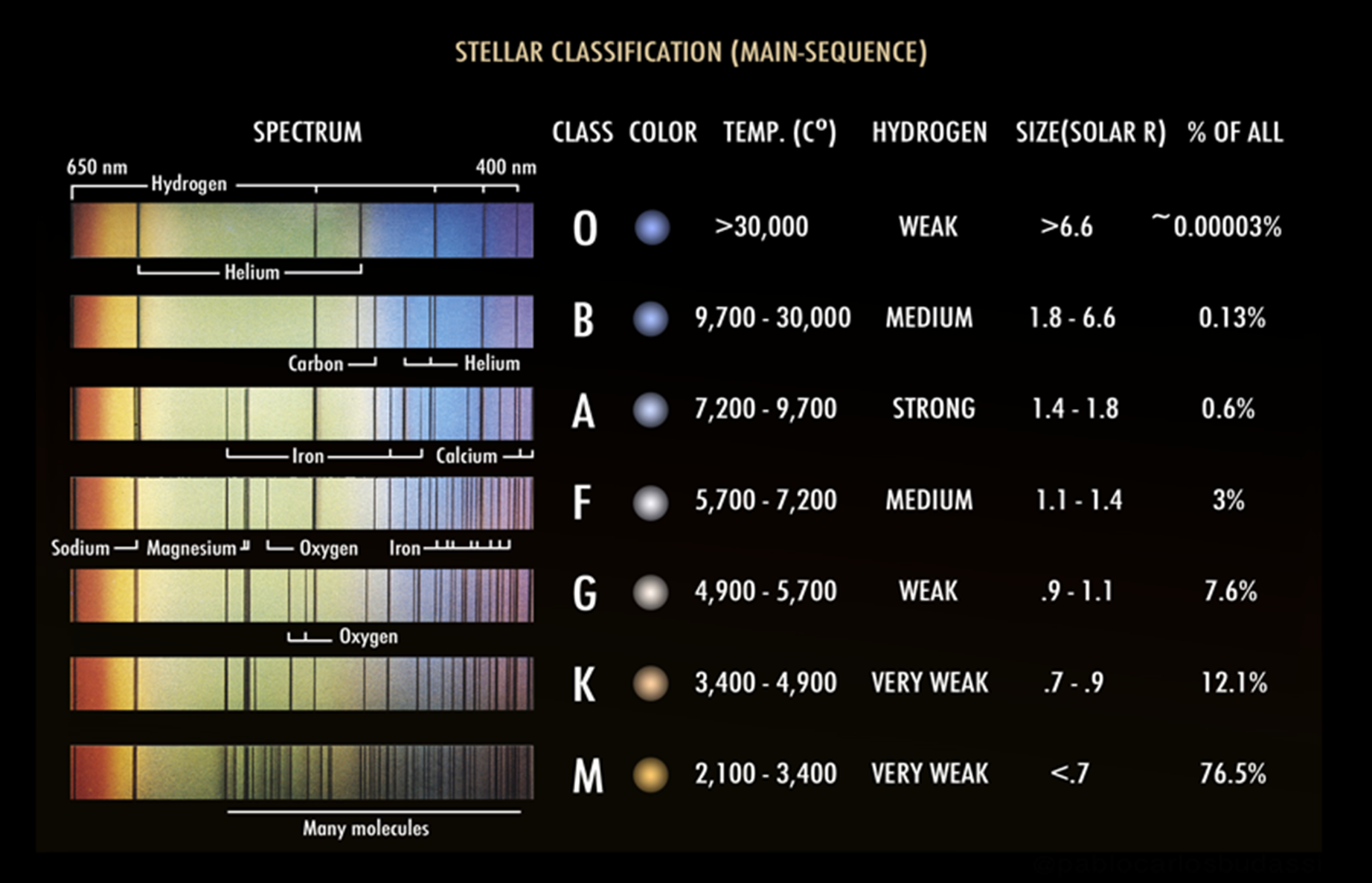
Harvard Spectral Classification. Pablo Carlos Budassi
Part 3: Stars Are Made of Hydrogen!
Now we come to Part Three of Cecilia Payne’s thesis: Additional Deductions from Ionization Theory. In the smallest and final chapter of her PhD, Payne made a revolutionary discovery: hydrogen is the most abundant element in stars.
At low temperatures, a large portion of the star will be made of neutral (non-ionized) atoms. This means the atoms can absorb light, resulting in visible spectral lines from Earth. In stars with a much higher temperature, there may be no neutral atoms left, no light can be absorbed, and no lines appear in the spectrum.
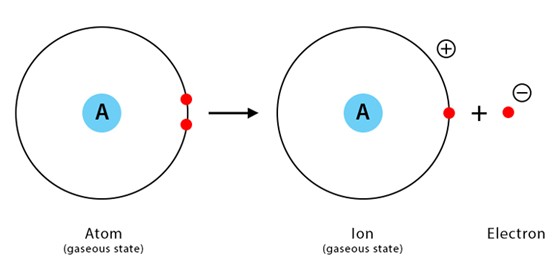
An ionized atom. ChemistryLearner.com
She then asked, what happens when an element is almost fully ionized, perhaps 70 or 80%? Only a small number of neutral atoms remain. These few atoms can still absorb some light, but the resulting spectral line would be very faint. In other words, faint lines in the spectrum indicate that only a small number of neutral atoms are present.
Cecilia then made a key assumption:
The number of neutral atoms needed to produce a faint spectral line is the same for each element.
From this assumption, she could calculate the relative amount between different elements. Cecilia applied this method to every element she could observe. What she found was astonishing: the quantity of hydrogen was far greater than anything else.
In fact, she concluded that hydrogen and helium were a million times more abundant than all the heavier elements.
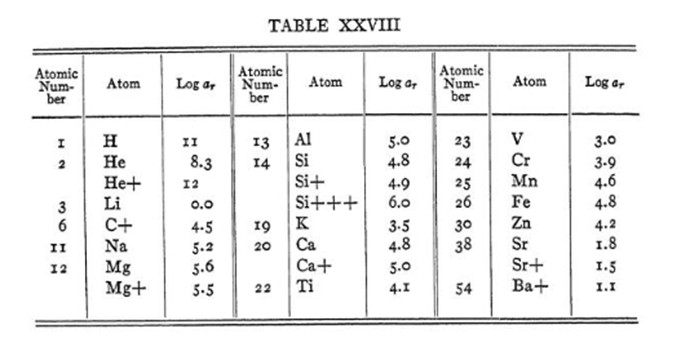
Table 28 from her PhD, showing that hydrogen is a million times more abundant than other elements. Stellar Atmospheres, 1925, Cecilia Payne
After completing her PhD, Payne needed her work to be reviewed before it could be published. The task fell to Henry Norris Russell, a well-known and respected physicist. He was deeply impressed by her thesis—except for one part: the conclusion that stars are made mostly of hydrogen. He believed this was impossible and warned that if she published that claim, she might be ridiculed by the scientific community.
To protect her career, Payne reluctantly added a note to her thesis, stating that the results were likely not real and would need to be verified. Later in her career she expressed regret about not standing up for her work and giving into authority.
Four years later, Henry Norris Russell conducted his own research and came to the same conclusion: stars are indeed made mostly of hydrogen. Cecilia Payne had been right all along.
The Impact on Astronomy
Cecilia Payne’s discovery was nothing short of revolutionary. The idea that stars are made primarily of gas, rather than rock and metal like Earth, was completely different from what scientists believed at the time.
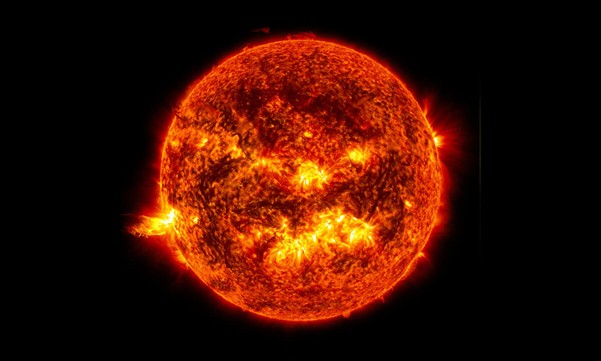
The Sun and other stars are made of hydrogen gas! NASA/SDO
It’s hard to overstate the impact of Cecilia Payne’s work. It completely transformed our understanding of stars and the universe. Without it, we wouldn’t know how stars generate energy through nuclear fusion, how they are born, how they die, or even how the Big Bang led to the formation of the elements.
In terms of its significance, her discovery stands alongside the work of Copernicus, who showed that the planets orbit the Sun rather than Earth. Like Copernicus, Payne challenged the accepted knowledge of her time—and like him, she wasn’t fully believed or given due credit. Her position as a young woman in science made it even harder for her work to be accepted.
Recognition At Last
Although Cecilia Payne’s groundbreaking discovery wasn’t fully appreciated at the time, other astronomers came to recognize the brilliance of her work in the years that followed. In 1960, renowned astronomer Otto Struve described her PhD as “the most brilliant thesis ever written in astronomy.”
After completing her PhD, Cecilia continued her research and built an extraordinary career. She became the first woman to be appointed a professor at Harvard University, and later, the first woman to chair the Department of Astronomy—a remarkable achievement in a field that had long excluded women from leadership roles.
We hope you enjoyed today’s article and learning all about Cecilia Payne and her incredible discovery!
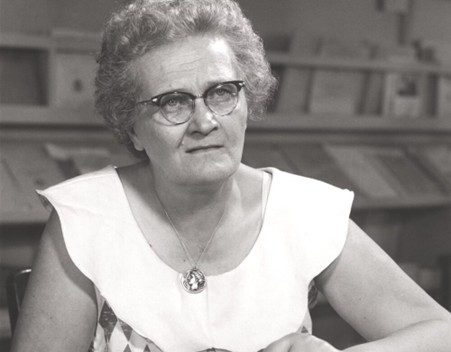
Cecilia Payne-Gaposchkin. Science History Institute









